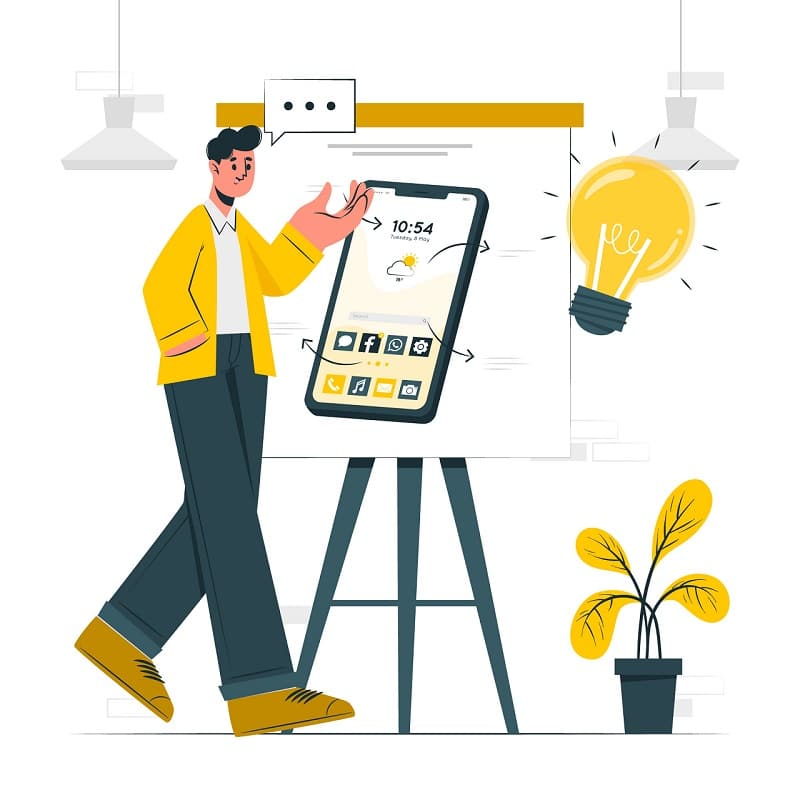How to Build a Great Student Portfolio for Your First Interview
Many students dread putting together their portfolios, especially just after graduating. They feel that their lack of work experience is a roadblock. However, you do not need years worth of experience and hundreds of projects under your belt to create a great portfolio as a student!
In fact, you probably already have everything you need at your fingertips. In this article, we will show you what you should be looking out for, some general pitfalls, and how you can successfully build up your portfolio as a student to land you an interview, university position, or even that new job.
Building Your Student Portfolio
Building a portfolio is not as easy as collecting a handful of previous projects. To get the desired effect, you need to think about what the expectations for your portfolio are.
To do this, research the company/university you are applying to, find out what it is exactly that they are most interested in when looking for a new hire, and lean on that aspect; This might be a purely technical skill or maybe even a personality trait. This will help inform how you will build the rest of your student portfolio.
First impressions are key. Therefore, no matter what the career path, a crucial tip is to both begin and end on a strong note. This will guarantee that your student portfolio will be read from cover to cover.
Starting with one of your more striking pieces of work or cleverest pieces of design as a hook will captivate your intended audience. However, this impression might fade over time.

Your interview portfolio is not just a collection of your best work. Recruiters often try to read between the lines and establish a view of each candidate before an interview. This is why it is important for your portfolio not only to reflect your skills but also everything you wish them to know about you as a creator in your field.
Firstly, focus on your process. How you create is usually more important than the creation itself when it comes to interviews. True, a great piece of work will always capture one’s attention, but it is often the case that recruiters want to see the journey you took to reach the finished product.
This is why, unless stated otherwise, annotating your works with a few sentences can aid you immensely.
If possible, you should briefly preface your inspiration, some of the challenges you faced in that specific project, and the risks you had to take, but more importantly, how you overcame them.
This is an often overlooked aspect of a portfolio that you can make use of. For example, you might weave a story around certain materials not fitting your vision leading to the use of unconventional fabrics which you’ve since grown to incorporate in your work.
Or describe the unique means by which you optimized your code that led to learning a new skill or perhaps the way you tailored lesson plans to fit the needs of certain students.
All of these examples would show recruiters not just your method and approach to your work, but also your willingness to change and adapt to circumstances. This versatility is a highly sought-after trait in any creative industry and if you can exemplify this, it will not go overlooked.
However, these small stories also serve a different purpose. Simply put, they are engaging. Having your intended audience be invested in your personality as well as your work adds a certain charm that can reinforce any positive first impressions.

This should of course be used in moderation as student portfolios are primarily a showcase of skill, and if overdone they can reinforce negative impressions as well. Though generally varying your work and telling your story of growth will keep your portfolio fresh and exciting from page to page.
Something that many students often hesitate to include in their portfolios is group projects, even if they are some of their best work. However, these projects are golden opportunities that can only benefit you as long as you approach them properly.
Working well in a team is a universal net positive for any company looking for a new hire. Therefore a project in which you demonstrated this ability will contribute to your status as an excellent candidate even before an interview. Although when including group projects, your own role and position within the project should be clearly annotated.
Don’t Waste Your Interview
Finally landing an interview after months of job searching is a plus, but it’s not a victory yet. Don’t waste your precious interview opportunity by being unprepared. Big Interview’s practice tools are all the preparation you will need, making you really good, really fast, guaranteed.
Get Instant Access Today
Finally, some professions do not deal with pieces of media that can easily be represented within a portfolio. Sculptures, clothing, and three-dimensional art, for example, might need a bit of extra care.
While regular, professional photographs might suffice, you may also use the medium of photography to give your pieces an extra dimension. Along with images clearly displaying your subject, include a photo where you play with lighting, angles, background, etc. to build on the tones and nuances that you established in your piece.
What to Include in Your Student Portfolio
Now that we’ve discussed the basic approaches to writing your student portfolio, it is important to know what it is that you should actually be including.
Firstly, any and all projects from university are valid when it comes to your interview portfolio. Students often hesitate to put assignments into their interview portfolios when applying for jobs. However, a portfolio is supposed to be a collection of your best work, not a collection of work for paying clients.
Remember that these assignments were meant to test your skills and knowledge and they can be a perfect fit to tell a story about you. Simply hand-pick the ones that best represent your abilities, tell the most about your work, or are generally the most striking.

Have you already had clients during your studies? Those projects can be an excellent addition to your student portfolio! No matter how small the piece, it can be included as long as it is relevant to the application. Although you should always make sure to get your client’s permission whenever possible.
If you’re still struggling to find ways to fill some gaps within your interview portfolio, there is a simple and obvious solution; creating something for the express purpose of including it in your portfolio. This is the easiest way and often it can yield the best results as you are given the freedom to experiment without constraints or pressure.
How to Present your Student Portfolio
The presentation of your interview portfolio is just as important as what you include in it. Although today virtual portfolios are most recommended, especially with the rise of remote international jobs, physical copies are still prevalent.
No matter the medium, there are a few tips that are universal and that you should keep in mind when creating your portfolio.
Organization is crucial. As we have discussed before, there is an inherent subtext to your portfolio that will be examined by recruiters, and this extends to how you organize your work as well.
Submitting an untidy and confusing body of work will show a lack of discipline, diligence, or care and will ruin a first impression. Make sure that the portfolio you submit is neat and orderly.
For physical copies ring binders work best, whereas virtual portfolios should generally be in PDF format (unless stated otherwise) as they can be read universally across all devices and have a great size to image quality ratio.
This extends to the formatting of your page. When starting your portfolio, choose either portrait or landscape and stick with it.

Including a table of contents is a must, complete with numbered pages.
Recruiters may end up going through a hundred different portfolios and ease of navigation is a very welcome feature that will ensure that focus is placed on your work rather than trying to get a foothold on the location of specific projects.
Portfolios are not always limited to what you submit. Companies and universities often search the online presence of some of the more promising candidates.
Everything from showcase platforms such as ArtStation and DeviantArt to social media profiles and online stores like Instagram and Etsy can be valid ways for recruiters to broaden their view of you. You can use this to your advantage by displaying pieces or projects that otherwise did not make it into your carefully crafted student portfolio but you want to be seen.
In some cases, linking to an external site might even be required (videos, designed websites, etc.). In this case, make sure that what you want to be seen is set to either public view or that your recruiters will have the proper permissions to enter and view your work. If you wish to learn more about online portfolios, check out our article where we also discuss the best platforms to host your portfolios.
Portfolios exist to display your talent. Even as a student, you can create a portfolio that is perfectly suited to land you an awesome opportunity.
Don’t Waste Your Interview
Finally landing an interview after months of job searching is a plus, but it’s not a victory yet. Don’t waste your precious interview opportunity by being unprepared. Big Interview’s practice tools are all the preparation you will need, making you really good, really fast, guaranteed.
Get Instant Access Today
Just remember that your portfolio will evolve over time. It will grow with the projects you do, but it will also shrink as you condense your portfolio to those key elements that best represent your work. If you keep these few tips in mind, you will start your journey strong with an awesome student portfolio
Once you submit your portfolio, your next step is the interview. If you wish to learn more about the interview process check out our many resources at Big Interview Resources.
